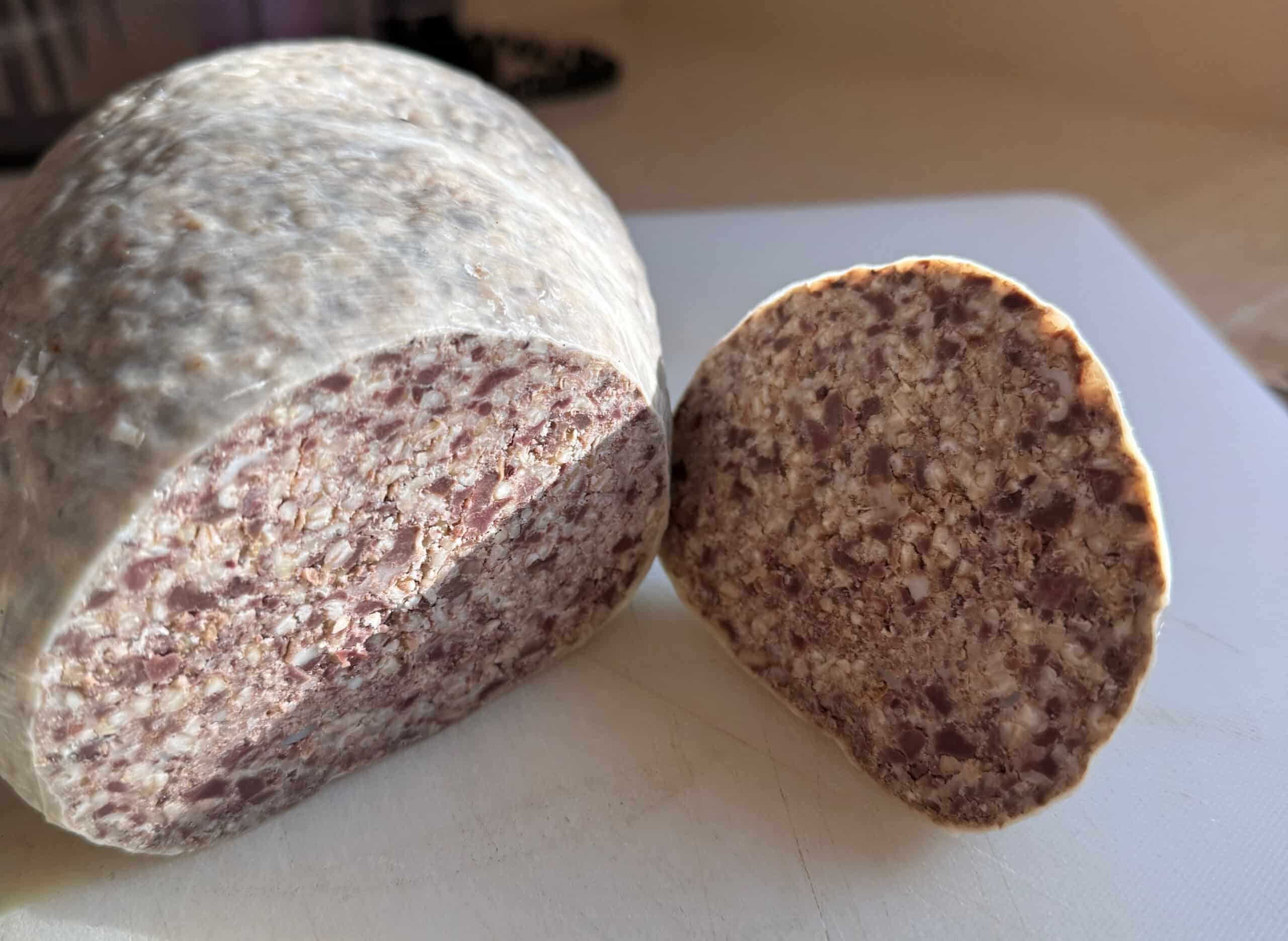We often intertwine certain foods with certain cultures. For instance, pasta is Italian, croissant is French, and haggis is undoubtedly Scottish. The truth of it all is that pasta might actually be Chinese, croissants have been inspired by an Austrian, and haggis doesn’t belong to Scotland alone either.
There are multiple threads to the history of the Great Chieftain o’ the Puddin’-race, a loving title gifted to haggis by Robert Burns. Some say that it goes back to the Roman times when a haggis-like solution was deployed to preserve meats during hunts.
Whenever the animal was killed, the offal was chopped up, sealed inside the animal’s stomach and boiled. Others suggest that haggis was brought from Scandinavia by the Vikings since the root of the word hag may have been derived from the Old Norse haggw or the Old Icelandic hoggva – both of which mean ‘to chop’.
Similar to that, the origins might have equally been French. Hag is also surprisingly similar to the French verb hacher, which, like haggw/hoggva, means ‘to chop’ or ‘to mince’.
There are several English references too. A dish much similar to haggis is referenced in a cookbook (c.1390) written by the Chief Master Cooks of Richard II and also features in the Promptorium parvulorum (c.1440), a bilingual English-Latin dictionary attributed to Geoffrey the Grammarian, a Norfolk friar.
The first Scottish reference comes at around 1513, when haggis appears in a verse by William Dunbar, a poet associated with the court of James VI. But even then, no claims were made to its Scottishness, but rather it was mentioned as something that people ate.
Interestingly, Alexander Lee, in his article ‘A History of Haggis’, suggests that the first people to identify haggis as Scottish were not the Scots but the English. This came at around the 17th century, when due to an agricultural revolution, the English had become progressively more affluent and therefore stopped eating offal.
Scotland, on the other hand, was embracing it with open arms due to poverty caused by some bad political and economic decisions made at the time.
Furthermore, the growing resentment among the English of Scottish Highlanders (for the Jacobite Uprisings that attempted to reinstate deposed James II) had ensured an even greater departure from haggis and its stronger attribution to the Scots.
Parallels were made between the Scottish character and haggis, describing both as barbaric and uncivilised. Ironically, that played into the growing strength of Scotland and haggis, particularly when Robert Burns, in his ‘Address to a Haggis’ (1786), acknowledges the connection between food and character. He suggested that haggis was food of real men, and that the English better watch out when they scold the Scots.
This acknowledgement, as well as his prolific talent, have earned Robert Burns an eternal place in Scottish culture, such that January 25 brings together Scots all over the world for a Burns Dinner to enjoy haggis and recite his poetry.
But back to haggis, classically* it is made with sheep’s pluck (its heart, liver and lungs) that is minced with onions, oatmeal, suet, salt and spices and then stuffed into the sheep’s stomach. Despite the return of the nose-to-tail dining, such list of ingredients can cause haggis-related anxiety even amongst the most adventurous eaters. However, most likely, it all boils down to the quality and preparation of the product.
To begin with, the sheep’s stomach needs to be thoroughly scraped inside with a knife before soaking in a cold overnight salted bath. Heart, liver and lungs also undergo a thorough cleaning, getting rid of impurities that could cause them to be bitter, a genuinely undesired side effect that can eclipse their natural, sweet flavour.
Afterwards, the offal is minced to resemble the grains of any other minced meat and combined with the remaining ingredients. It is then placed into the casing and boiled for 90 minutes or so.
Most commonly, haggis is served with mashed root vegetables, also known as tatties (potatoes) and neeps (turnips), generously seasoned with pepper and washed down with a ‘dram’ of whisky.
However, there are plenty of other ways to enjoy haggis. It serves beautifully as a juicy stuffing to a festive turkey. It makes a delicious lasagna sauce or a ravioli filler; it can be baked into a portobello mushroom or a red pepper.
Why not try a haggis toastie or haggis panini, or even nachos with haggis? Haggis can be also enjoyed with onion marmalade on an oatcake or simply as a delicious partner to eggs.
Though haggis leaves many on the fence with regards to its culinary potential, its greatest asset is that it provokes curiosity. From its historical ambiguities to the fiery debates about its flavour and texture, haggis has always been surrounded by mystery. In my view, may it remain so; may its history remain as rich and nourishing as haggis itself.
*There are beef, pork or mixed meat variations of haggis available. Equally, the vegetarian haggis option that is made with vegetables and pulses.
By Dr. Irina Mikhailava
|| features@algarveresident.com
Dr. Irina Mikhailava, a chef and a good food champion, happily residing in the Algarve and eating all over the world with an appetite for learning, sharing and writing. Instagram: incompanyoffood
























